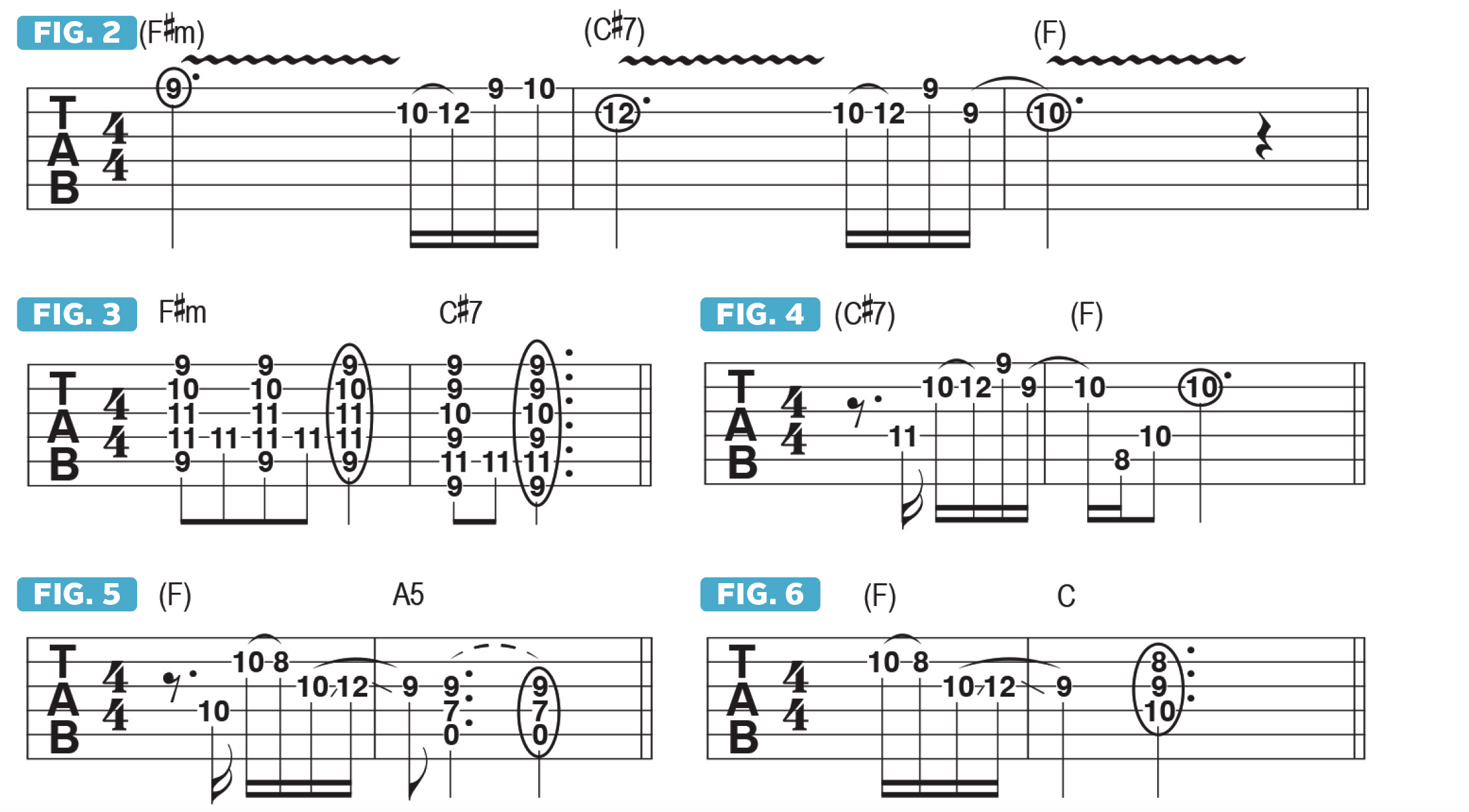How to weave small two-note chords around a guitar melody
Andy Timmons unpacks his chord/melody approach and explains how you can use it in your own songwriting ideas

In this lesson, I’d like to take a look at my song That Day Came, which I recorded for my 2016 album, Theme From a Perfect World, as a means for exploring how to present a melody while supporting it with small two-note chords, often referred to as dyads, and other chord voicings that serve to fill out the harmony.
Figure 1 presents the tune’s introductory melody, which is played in the key of F# minor. I begin by sounding an F#m chord in 9th position across the first three beats of bar 1, and on beat 4 a melody is introduced that sets up a change to the V (five) chord, C#7.
This line is based on the F# Aeolian mode (F#, G#, A, B, C#, D, E), also known as the F# natural minor scale. Throughout the remainder of this passage, I utilize a similar chordal approach across the first three beats of each bar before bringing in the melodic line on beat 4 that sets up the next chord change.
As bar 2 moves into bar 3, I hammer-on from G# to A, which had served as the minor 3rd of F#m. But here I switch to an F chord, so the A note now serves as that chord’s major 3rd (the third degree of the F major scale: F, G, A, Bb, C, D, E).
The melodic line at the end of bar 3 culminates with an E note, sounded on beat 1 of bar 4, which sets up a change to A5.
The harmonic reference here is really A major, which, as the relative major key of F# minor, helps to solidify the overall harmonic tenor of the piece. Bar 4 ends with an ascending line based on A major, and brings in a chromatic twist at the end, moving from B to C to C#, which sets up a return to the relative minor chord, F#m.
Bars 5-7 are a recap of bars 1-3, with a new twist offered as we move into bars 8 and 9. Instead of resolving from F to A here, as we had done earlier, this time we resolve from F to C, then find our way back to A via a descent from C to G/B to A. The phrase then ends ominously on a Bb(#11) chord.
All the latest guitar news, interviews, lessons, reviews, deals and more, direct to your inbox!
A good way to approach this song is to examine the melodic and chord elements individually. Figure 2 illustrates the opening melodic theme on its own, and Figure 3 shows the simple i - V (one-minor to five) chord change of F#m - C#7.
Figure 4 focuses on the simple melody played over the F major chord, Figure 5 focuses on the transition from F major to A major, Figure 6 details the shift from F to C and Figure 7 breaks down the chord voicings used for C - G/B - A.
As you play through these examples, keep a close eye on your fingering choices for the melody notes, as using the appropriate finger is necessary in order to properly fret each subsequent chord.
Figure 8 gives a “global” view of the last part of the progression, minus the melody, offering a clear sense of the subtle shifts in tonality.
Andy Timmons is a world-renowned guitarist known for his work with the Andy Timmons Band, as well as Danger Danger and Simon Phillips.




